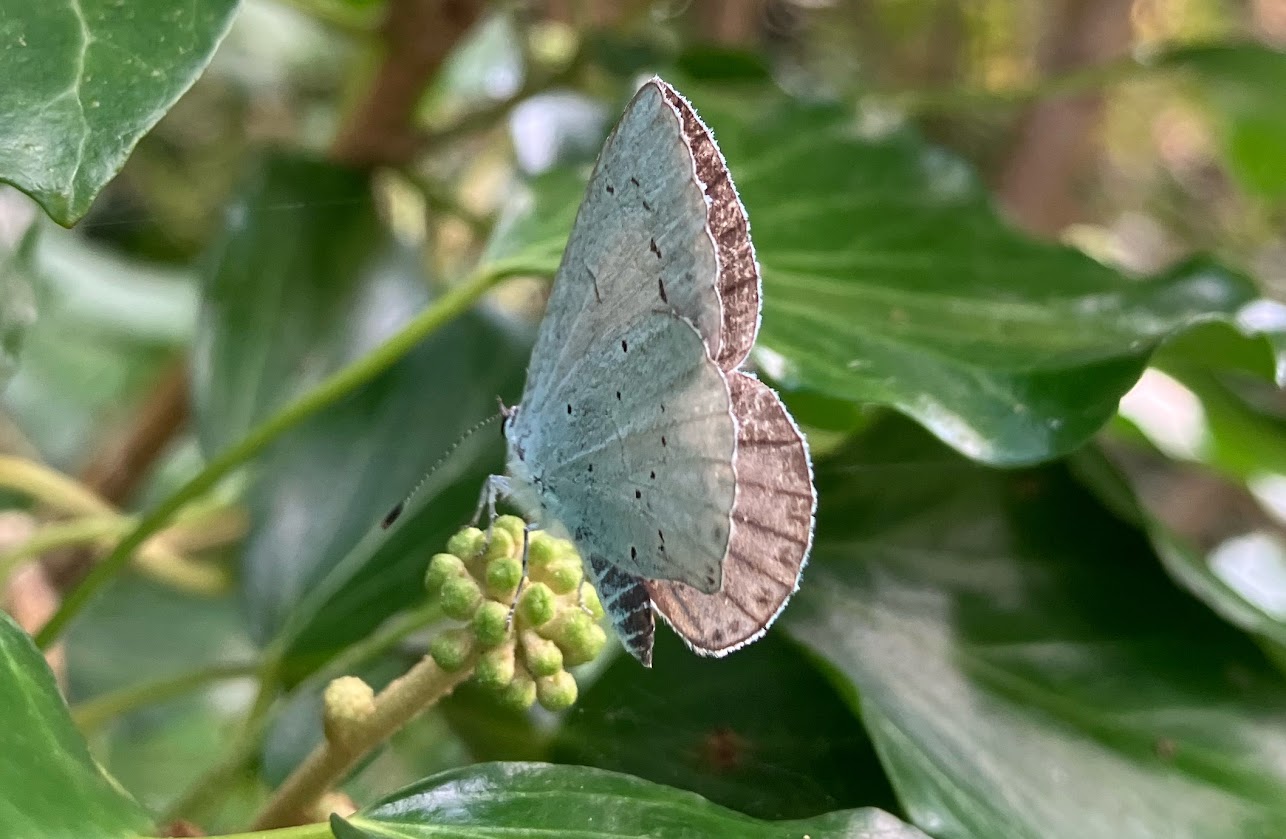Strange Behaviours
1 November 2023

One bright morning earlier this month, I walked into the study to find a baby blue tit hopping irritatedly around the floor. He was young enough to be annoyed but not frightened, and making intermittent, lazy attempts to fly up to the window.
The window was about three inches open, and I imagined the journey that led him here. Snacking on bugs under the ledge. Distracted by a spider sprawling over the ledge. Tempted by tiny flies on the plants on the sill. Further and further into the room until the window was far away and that little slit too difficult to rediscover.
We spent some time looking at each other, he and I. He wasn’t much scared of me and at one point spent a while sitting under my desk. But then, I do believe our garden birds recognise us. The sparrows chide us when the feeders run low. The robin expects fresh water every day. The blackbirds follow us hopefully every time we get out our spades.
Eventually, I decided to open both windows as wide as they would go and wait. The boundary between outside and inside dissolved, and, briefly, we slipped into a state where the garden and the room were one and the same. Sensing this, the blue tit took his chance, aimed true, and flew straight out. A chitter in the trees told me his family welcomed him back and, no doubt, he immediately embarked on a round of excited storytelling.
I’ve never had a blue tit in the house before. It was a sunny day, but only around 18°, so no exceptional weather conditions. A few days later, when the temperature reached 22°, however, red admirals sunned themselves on pavements, and I found a box tree moth sulking under the honeysuckle. Although this grey summer did not have the balmy heat of last summer, several broods of blue tits and long tailed tits hatched in our hedge, so competition, perhaps, is what made the little bird foolish and bold.
There is an odd sense that the garden is thriving this year. What it lacked in sun it gained in rain; it’s still green, still full of flowers, I’m still picking strawberries and have only just harvested my last cucumber. I’ve seen more butterflies too; speckled woods circle danced up and down the flowerbeds for months while cabbage whites and holly blues regularly passed through.
Only when the sky takes on that broad orange hue at sunset do I become uneasy – it may look like summer, but the evenings and mornings are dark. There are too many strange behaviours. And more to come. As daylight recedes, the plants will make a show of dormancy. They will hover, on the edge of sleep through a mild winter while bugs thrive in the unexpected warmth. Fungus, bacteria, viruses, all manner of pathogens will capitalize on our confused climate.
And what will we do? Watch, initially. Hopping around irritatedly. Refusing to admit the journey that led us here, one bold, foolish step at a time. Centuries in the making, from the moment we put up the boundaries between outside and inside. Taking all the other species with us, on our perilous trajectory into the Anthropocene.
